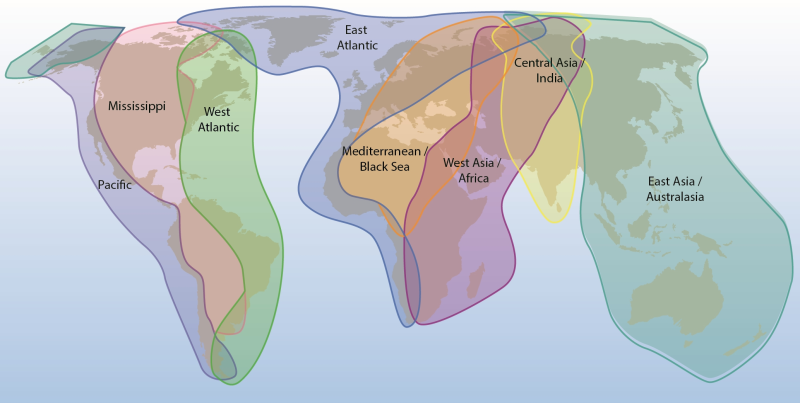ACIA
Type of resources
Available actions
Keywords
Contact for the resource
Provided by
Representation types
Update frequencies
status
-

Arctic Biodiversity Assessment (ABA) 2013. Figure 4.2. Major flyways of Arctic birds. Bird migration links Arctic breeding areas to all other parts of the globe (adapted from ACIA 2005). Conservation of Arctic Flora and Fauna, CAFF 2013 - Akureyri . Arctic Biodiversity Assessment. Status and Trends in Arctic biodiversity. - Birds(Chapter 4) page 146
-
To slow the spread of the Brown spruce longhorn beetle to new areas, the Canadian Food Inspection Agency (CFIA) uses measures to control the movement of potentially infested materials. Slowing the spread of the Brown spruce longhorn beetle will protect Canada's environment and forest resources. It also helps keep international markets open to the forest industry and nurseries in non-regulated parts of Ontario and Quebec and in the rest of Canada.
-
The Canadian Food Inspection Agency (CFIA) established a regulated area as part of its efforts to eradicate the Asian longhorned beetle (ALHB). With the regulation of this area, there are restrictions on the movement of nursery stock, trees, logs, lumber, wood, wood chips and bark chips from certain deciduous trees identified as hosts of the ALHB and firewood of all species. These restrictions are necessary to prevent the spread of the ALHB. This protects Canada's environment and forest resources, and also helps keep international markets open to the forest industry and nurseries in non-regulated parts of Ontario and in the rest of Canada.
-
To slow the spread of the Hemlock woolly adelgid to new areas, the Canadian Food Inspection Agency (CFIA) uses measures to control the movement of potentially infested materials. Slowing the spread of HWA will protect Canada's environment and forest resources. It also helps keep international markets open to the forest industry and nurseries in non-regulated parts of Nova Scotia and in non-regulated parts of Canada.
 Arctic SDI catalogue
Arctic SDI catalogue